Vegetable Biryani is a delicious recipe and aromatic rice dish popular in many cultures. It combines fragrant basmati rice with a mix of colorful vegetables and spices. Not only is it flavorful, but it's also a great way to enjoy a variety of nutrients. Let’s dive into this tasty recipe!
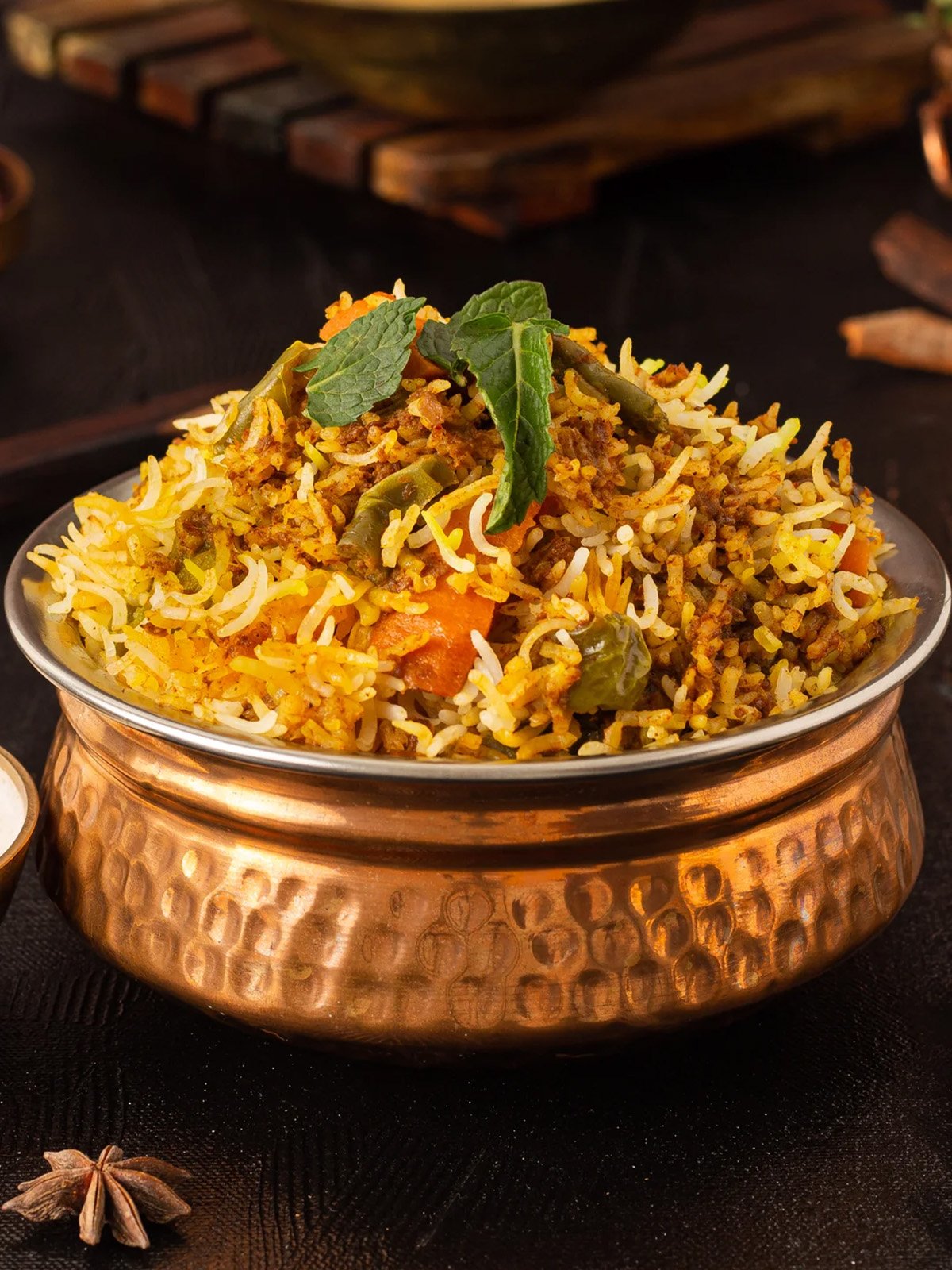
Jump to:
About Vegetable Biryani
Biryani has a rich history that dates back to ancient times, originating from Persia and then spreading to India. Over the years, it has evolved, with each region adding its unique flavors and ingredients.
For example, while the Mughal emperors popularized meat biryani, vegetarian versions like Vegetable Biryani became beloved recipe in many Indian homes.
This dish combines fragrant rice with various vegetables and spices, making it not just tasty but also nutritious.
Today, Vegetable Biryani recipe reflects the cultural diversity of India, showing how different traditions blend together. Overall, it’s a delicious part of our culinary history!
Health Benefits
- Nutritional Value of Vegetables: Biryani often includes a variety of vegetables like carrots, peas, and potatoes. These veggies are packed with vitamins and minerals, which help keep you healthy.
- Spices for Health: Spices like turmeric and cumin add more than just flavor. For example, turmeric is known for its anti-inflammatory properties, while cumin can aid digestion.
- Balanced Meal: Overall, Biryani is a balanced dish. It combines carbohydrates from rice, proteins from legumes, and healthy nutrients from vegetables and spices, making it a wholesome choice!
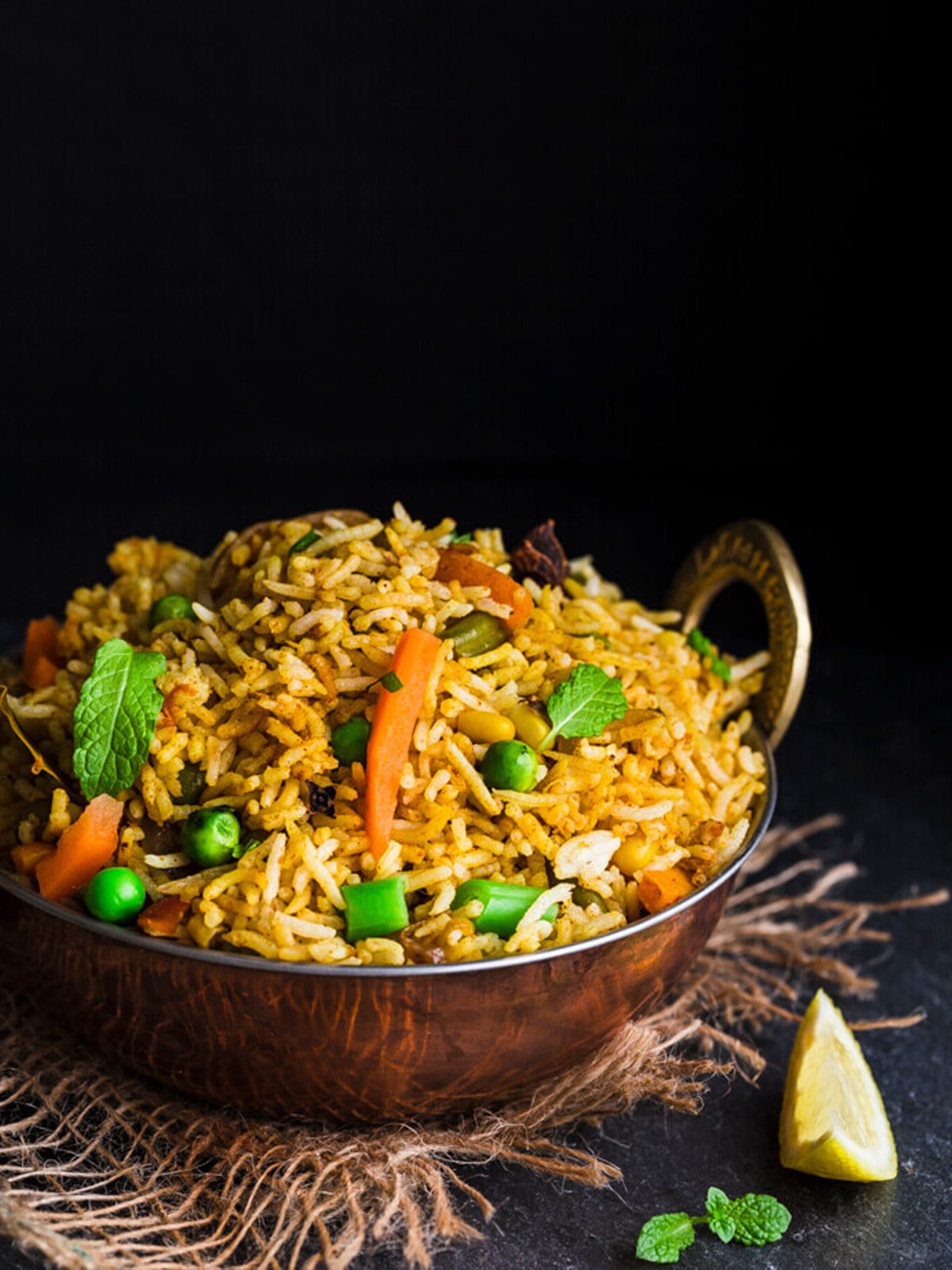
What is Vegetable Biryani?
Vegetable Biryani recipe is a flavorful rice dish that combines fragrant basmati rice with a mix of colorful vegetables and spices.
First, the rice is cooked separately, and then it’s layered with sautéed veggies like carrots, peas, and potatoes.
Spices such as cumin, coriander, and saffron add delicious taste and aroma. The dish is often garnished with fresh herbs like cilantro and mint, making it even more appealing.
Not only is Vegetable Biryani a popular choice for special occasions, but it’s also a comforting meal for everyday dinners. Overall, it’s a tasty, colorful, and nutritious dish loved by many!
Pick the Right Rice for Biryani
When making Biryani, it's important to pick the right rice. First, choose basmati rice because it’s long-grained and fragrant.
Rinse it well to remove excess starch, which helps keep the rice fluffy. Finally, soak it for about 30 minutes before cooking for the best texture and flavor!
How to Make Restaurant Style Vegetable Biryani
Step by Step Instructions
Preparing the Rice
1. Rinse and Soak: First, rinse the basmati rice under cold water until it runs clear. Then, soak the rice in water for 20 minutes before draining it.
2. Boil the Rice: Next, bring 4 cups of water to a boil in a large pot. Add the bay leaf, cardamom pods, cinnamon stick, cloves, and a pinch of salt. Then, stir in the soaked rice.
3. Cook the Rice: Cook the rice until it's about 70% done, which takes about 8-10 minutes. The grains should be firm and slightly undercooked. Afterward, drain the rice and set it aside.
Preparing the Vegetables
4. Sauté Onions and Spices: Heat 2 tablespoons of oil or ghee in a large pan. Once hot, add cumin seeds and let them splutter. Then, add sliced onions and sauté until golden brown.
5. Cook Ginger-Garlic Paste: Add the ginger-garlic paste next and sauté for another 1-2 minutes until the raw smell goes away.
6. Add the Vegetables: Now, add diced potatoes, carrots, green peas, and cauliflower. Stir-fry the vegetables for 5-7 minutes until they begin to soften.
7. Add Spices and Yogurt: Mix in turmeric, coriander, cumin, garam masala, biryani masala, black pepper, red chili powder, and salt. Cook for 2 minutes, then add chopped tomatoes and yogurt. Stir well and cook for 5 minutes until the vegetables are tender and coated in spices.
Assembling the Biryani
8. Layer the Rice and Vegetables: In a large pot or oven-safe dish, start layering. First, add a layer of the vegetable mixture, followed by a layer of rice. Sprinkle chopped mint, coriander leaves, saffron milk, and fried onions (if using) over the rice. Repeat layers until all rice and vegetables are used.
9. Seal and Cook: Cover the pot with a tight lid or seal with aluminum foil. Cook on low heat (dum) for 15-20 minutes to let the flavors blend. Alternatively, you can bake it in a preheated oven at 350°F (180°C) for 15 minutes.
Serve
10. Finally, once the biryani is done, gently fluff it with a fork. Garnish with fried cashews, raisins, and fresh coriander leaves. Serve hot with raita, papad, or salad!
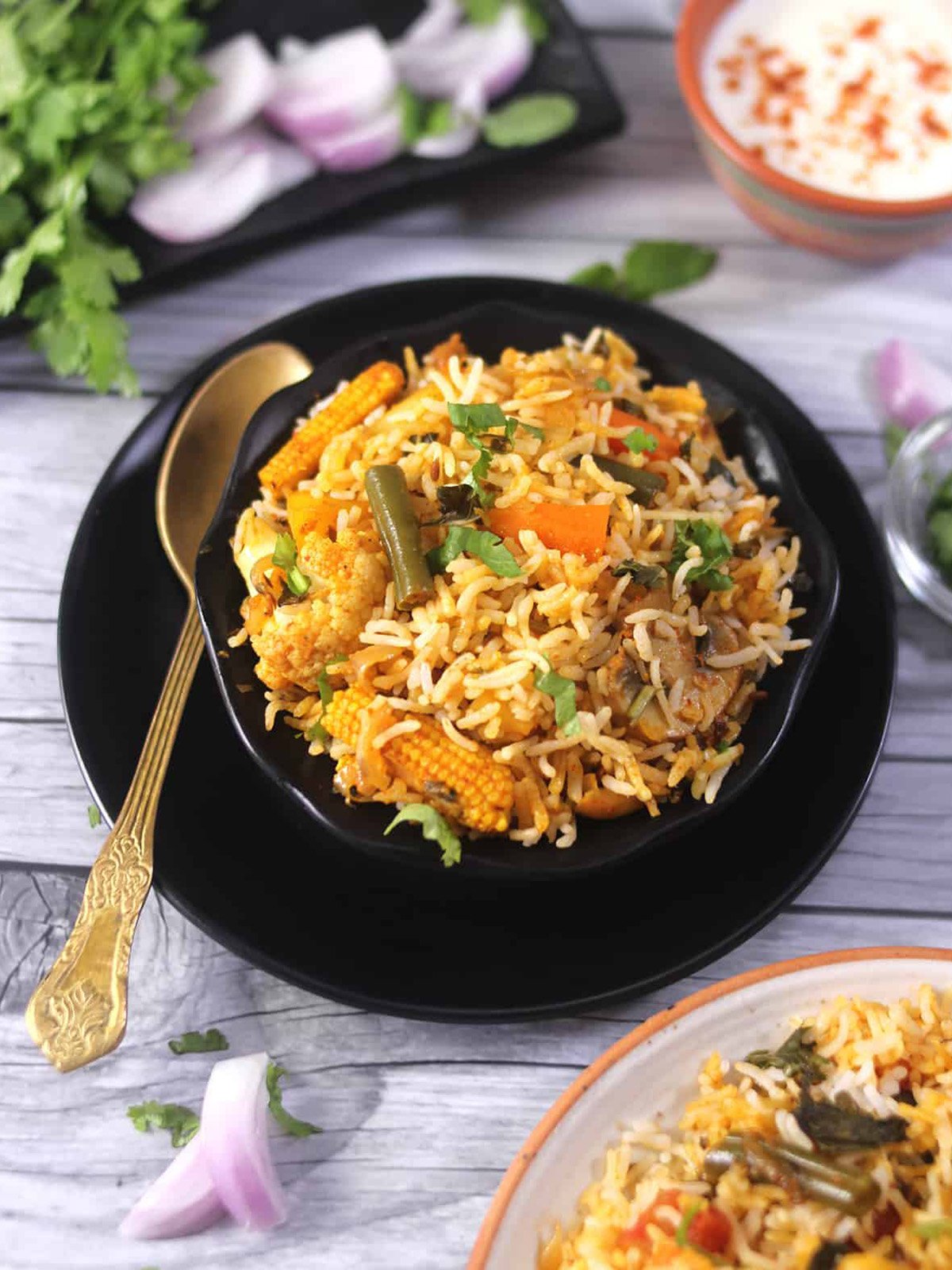
Cooking Methods
1. Dum Cooking(Slow Cooking)
- This method involves layering rice and vegetables in a pot and cooking them on low heat. For best results, seal the pot tightly to trap steam, which helps the flavors blend beautifully.
2. Pressure Cooking
- If you're short on time, use a pressure cooker. Simply sauté the vegetables and spices, add the soaked rice with water, and cook for just a few minutes. This method is quick and keeps the flavors rich.
Layering Techniques
Start by spreading a layer of vegetables, then add a layer of rice. Repeat this and top with herbs and spices. This method ensures even cooking and a tasty bite every time.
Tips for Perfection
Always soak the rice beforehand for fluffier grains, and don't rush the cooking process. Each technique has its charm, so choose what works best for you!
Pro Tips
1. Soak the Rice: First, always soak the basmati rice for at least 20-30 minutes. This helps it cook evenly and become fluffy.
2. Use Fresh Spices: Next, try to use fresh spices whenever possible. They add a stronger flavor and make your biryani even tastier.
3. Layer Well: When layering, remember to alternate between rice and vegetables. This ensures every bite has a mix of flavors.
4. Seal the Pot: Make sure to seal the pot tightly when cooking. You can use a heavy lid or aluminum foil to keep the steam in.
5. Let It Rest: Lastly, after cooking, let the biryani sit for about 10 minutes before serving. This helps the flavors settle and makes it easier to fluff. Enjoy!

FAQs
Sauté onions, garlic, and spices, add vegetables, and layer with partially cooked rice. Cook on low heat until everything is well combined.
Key spices include cumin, coriander, turmeric, garam masala, and whole spices like cinnamon, cardamom, and cloves.
Yes, but brown rice requires a longer cooking time and will have a different texture compared to basmati.
Popular vegetables include potatoes, carrots, peas, bell peppers, and green beans.
Yes, in a slow cooker, cook on low for 3-4 hours. In an Instant Pot, use the "Rice" or "Manual" setting.
Soak saffron threads in warm milk or water and drizzle over the rice before finishing the cooking.
Yes, just make sure they are thawed and drained to avoid excess moisture.
Adjust the amount of chili powder or green chilies to control the spice level according to your preference.
Let me know how you like this recipe by leaving a review and follow us on Pinterest, Facebook and Twitter
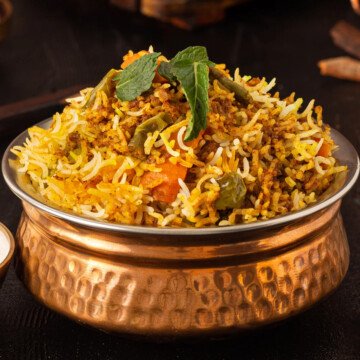
Vegetable Biryani
Ingredients
For Rice:
- 1 ½ Cup Long-grain basmati rice
- 4 Cup Water
- 1 Bay leaf
- 2-3 Green cardamom pods
- 1 Inch cinnamon stick
- 2-3 Cloves
- Salt to taste
For Vegetables:
- 1 Medium potato, diced
- 1 Carrot, diced
- ½ Cup Green peas
- ½ Cup Cauliflower florets
- 1 Medium onion, thinly sliced
- 1 Medium tomato, chopped
- 1 Green chili, slit
- 1 Cup Thick yogurt (curd)
- 2 tablespoon Oil or ghee
- 2 teaspoon Ginger-garlic paste
For Biryani Masala:
- 1 teaspoon Cumin seeds
- 1 teaspoon Coriander powder
- ½ teaspoon Turmeric powder
- 1 teaspoon Garam masala
- 1 teaspoon Biryani masala (optional)
- ½ teaspoon Red chili powder
- 1 teaspoon Cumin powder
- 1 teaspoon Black pepper powder
For Layering:
- 2 tablespoon Fresh coriander leaves, chopped
- 2 tablespoon Fresh mint leaves, chopped
- 1 tablespoon Saffron strands soaked in ¼cup warm milk
- 1 tablespoon Fried onions (optional)
Optional Garnishes:
- Cashews or almonds, fried in ghee
- Raisins, fried in ghee
Instructions
Preparing the Rice
- Rinse and Soak: First, rinse the basmati rice under cold water until it runs clear. Then, soak the rice in water for 20 minutes before draining it.
- Boil the Rice: Next, bring 4 cups of water to a boil in a large pot. Add the bay leaf, cardamom pods, cinnamon stick, cloves, and a pinch of salt. Then, stir in the soaked rice.
- Cook the Rice: Cook the rice until it's about 70% done, which takes about 8-10 minutes. The grains should be firm and slightly undercooked. Afterward, drain the rice and set it aside.
Preparing the Vegetables
- Sauté Onions and Spices: Heat 2 tablespoons of oil or ghee in a large pan. Once hot, add cumin seeds and let them splutter. Then, add sliced onions and sauté until golden brown.
- Cook Ginger-Garlic Paste: Add the ginger-garlic paste next and sauté for another 1-2 minutes until the raw smell goes away.
- Add the Vegetables: Now, add diced potatoes, carrots, green peas, and cauliflower. Stir-fry the vegetables for 5-7 minutes until they begin to soften.
- Add Spices and Yogurt: Mix in turmeric, coriander, cumin, garam masala, biryani masala, black pepper, red chili powder, and salt. Cook for 2 minutes, then add chopped tomatoes and yogurt. Stir well and cook for 5 minutes until the vegetables are tender and coated in spices.
Assembling the Biryani
- Layer the Rice and Vegetables: In a large pot or oven-safe dish, start layering. First, add a layer of the vegetable mixture, followed by a layer of rice. Sprinkle chopped mint, coriander leaves, saffron milk, and fried onions (if using) over the rice. Repeat layers until all rice and vegetables are used.
- Seal and Cook: Cover the pot with a tight lid or seal with aluminum foil. Cook on low heat (dum) for 15-20 minutes to let the flavors blend. Alternatively, you can bake it in a preheated oven at 350°F (180°C) for 15 minutes.
Serve
- Finally, once the biryani is done, gently fluff it with a fork. Garnish with fried cashews, raisins, and fresh coriander leaves. Serve hot with raita, papad, or salad!
Notes
Cooking Methods
1. Dum Cooking(Slow Cooking)
- This method involves layering rice and vegetables in a pot and cooking them on low heat. For best results, seal the pot tightly to trap steam, which helps the flavors blend beautifully.
2. Pressure Cooking
- If you're short on time, use a pressure cooker. Simply sauté the vegetables and spices, add the soaked rice with water, and cook for just a few minutes. This method is quick and keeps the flavors rich.













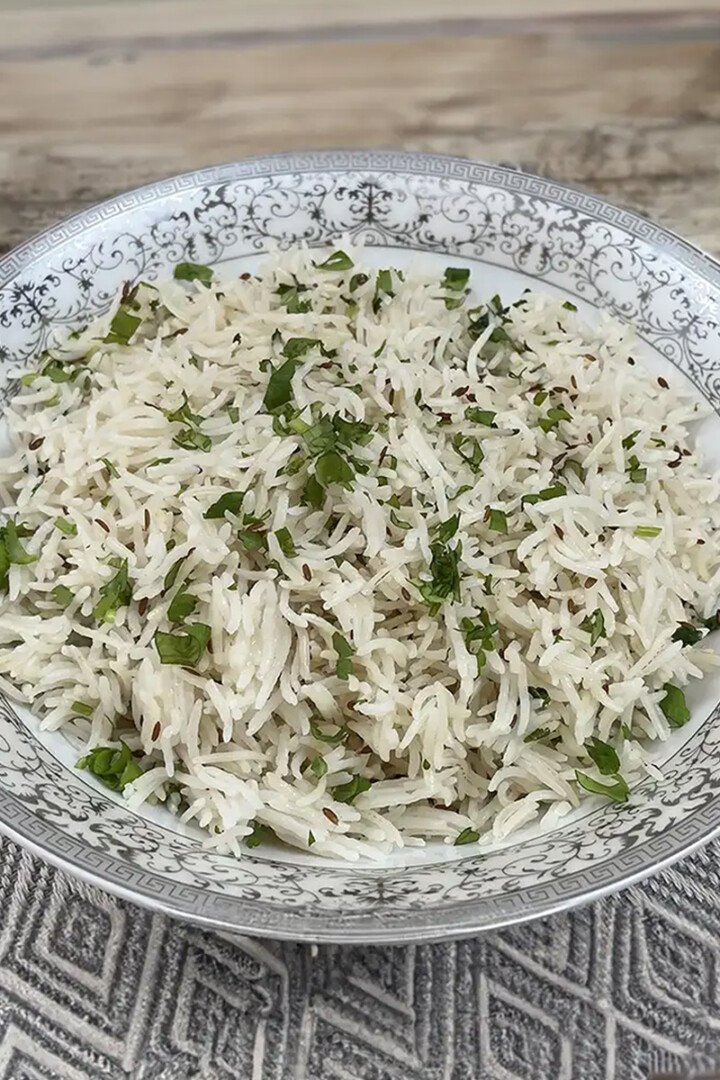



Leave a Reply